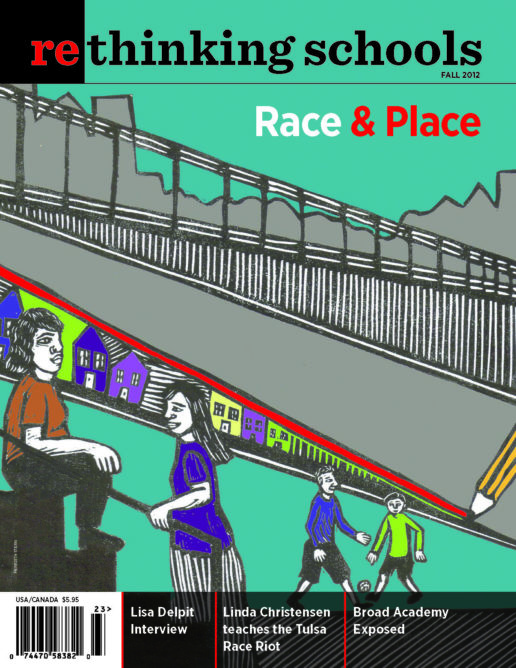Preview of Article:
From Tucson to Palestine
Illustrator: Chaz Maviyane-Davies
A generation ago, students led the movement in the United States to divest from apartheid South Africa. Today, student leaders are shaking Arizona as they defend Tucson’s Mexican American Studies (MAS) program. And, like those students who pushed for solidarity with South Africa, their activism is taking an international perspective. Some of them are applying what they have learned about colonial settlement and the importance of culture and history in Arizona to the Israeli occupation of Palestine.
Asiya Mir, who graduated from Tucson High Magnet School, was one of the teenagers in the youth activist coalition UNIDOS, which made national headlines in April 2011 when they chained themselves to Tucson Unified School District (TUSD) board members’ chairs to prevent the board from voting to dismantle the MAS program.
Mir was also the founder of Tucson High’s chapter of Students for Justice in Palestine (SJP), a solidarity group usually found on college campuses. “As a student living in a racist state attempting to rob my ethnic studies education from me,” Mir says, “I feel a close personal affinity with my fellow students in Palestine, who live under and struggle against Israeli aggression, terror, and cultural theft. . . . I embrace these students as my own; they are me, their struggle is mine.” This is exactly the kind of “ethnic solidarity” that the Arizona State Legislature is threatened by. Mir’s words are a variation on one of the indigenous concepts that forms the core of the MAS program: In Lak ‘ech or tú eres mi otro yo (you are my other self).

